Here’s a climate change impact you probably never considered: bison diets.
As the climate warms, bison in North America are likely to shrink, as documented in research published by Joseph Craine and colleagues.
The reason they shrink is because as grasslands warm, grasses and other plants accumulate less protein. Bison are then forced to eat plants that are less nutritious.
This raises a related question: what plants to bison actually eat?
The answer to this question could help conservationists manage for plant species that are higher in protein and preferred by bison – ensuring healthy herds on warming grasslands.
The Bison Story in Context
The near-loss of our bison herds is one of our most-told conservation stories. The great herds were reduced to near extinction, the survivors rescued with no time to spare. Bison have recovered – a remarkable success – but the animals are now scattered in much smaller herds on national parks, nature preserves and ranches.
Not only are there fewer bison roaming the Great Plains, they no longer migrate. Two or three major bison migrations once occurred on North America’s grasslands, on a scale that is difficult to comprehend today.
“Everyone thinks of the Serengeti as the home to a major migration, but it would have been dwarfed by the migration of bison on the Great Plains,” says Craine. “The scale of the plains is huge. Millions of bison would have traveled 1000 miles every year. They moved based on the nutritional quality of plants.”
Today, with most bison in fenced reserves, such movements are not possible. Bison need to meet their nutritional needs within the bounds of that reserve. If grasses with lower protein dominate, the bison have nowhere to move.
But how do bison diets shift in a warming climate? To answer this question, Craine researched actual bison diets in two herds on grasslands that differ in mean annual temperature by 6 degrees Celsius: the Samuel H. Ordway Jr. Memorial Preserve in South Dakota and the warmer Konza Prairie Biological Station in Kansas.
A mature bison in South Dakota averaged 500 pounds larger than one in Kansas. But researchers had a poor understanding of exactly what bison were eating in each place.
What he found, using sophisticated DNA analysis of fecal samples, contained some major surprises about what bison ate – including disproving the long-held belief that bison are strictly grazers.
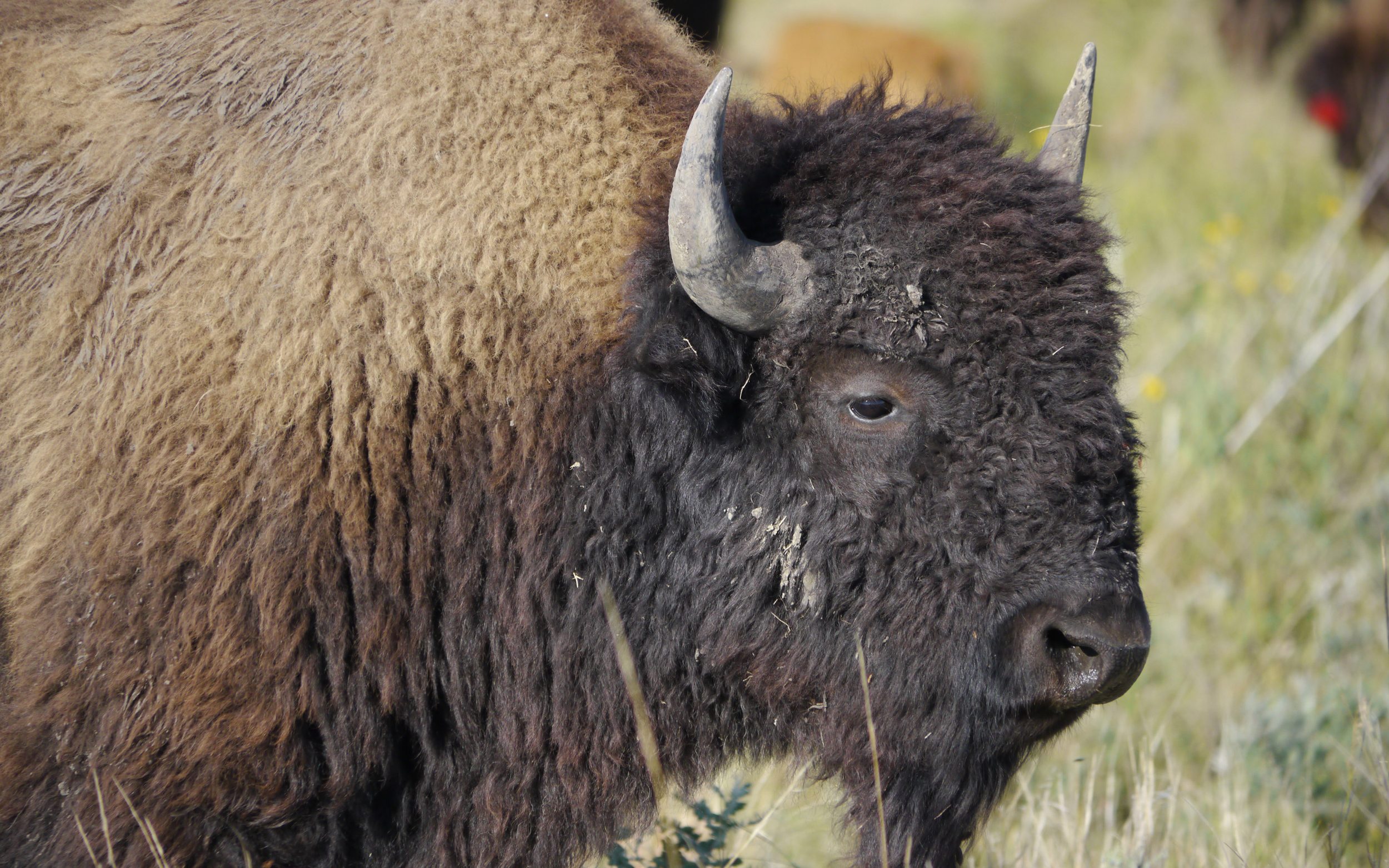
Follow that Pooping Bison
To analyze bison diets, researchers first needed fecal samples. Mary Miller, the Conservancy’s Northcentral South Dakota conservation manager, led collection on the Ordway Prairie. Finding a specific bison “patty” on the prairie seemed like a straightforward task but at times could feel like a wild goose chase.
Miller and her team were tasked with collecting fecal samples from mature cows and mature bulls. “Finding bison can be a lot harder than you think it should be,” she says. “This was complicated by the fact that you actually had to see a specific animal defecate. You had to make sure you had an animal in the right age range and then observe it for signs that it was getting ready to go.”
Miller has a lot of experience observing bison, so she could usually pinpoint an animal. But the fact that they are usually roaming in herds could complicate the search.
“Sometimes you’re approaching a herd, and all of a sudden they all stand up and poop right before you get there,” she says. “You know it’s going to be a while before they defecate again, so you’re going to be watching one bison for a long time.”
The fecal samples are then analyzed for the DNA from bits of undigested plant material, allowing for a rapid assessment of all the plant species consumed by the animal. “It’s using CSI techniques for conservation,” says Craine. “It’s a powerful way to determine what bison actually eat, which it turns out is quite different from what we thought they were eating.”
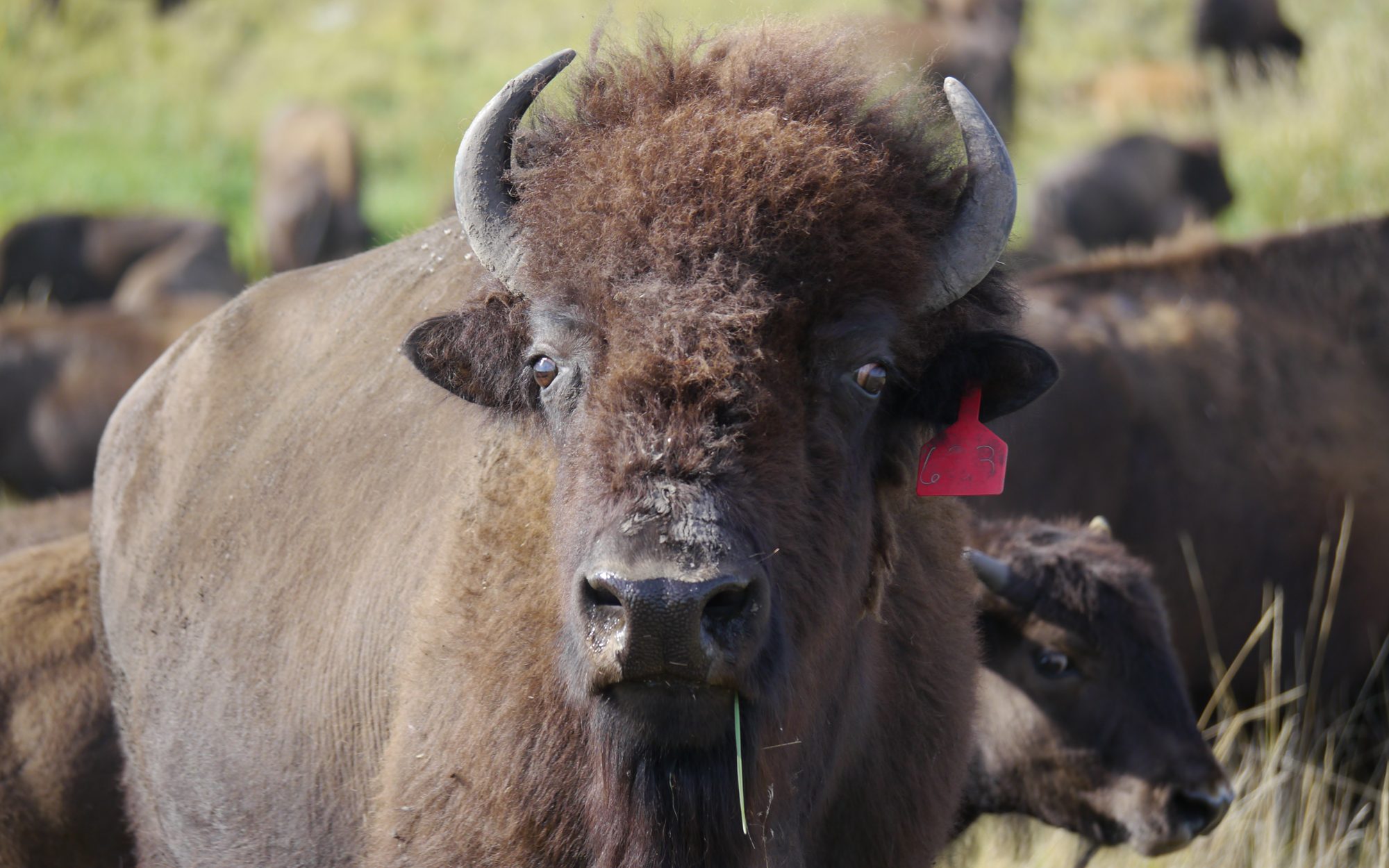
Grazers and Browsers
Bison are supposed to be strictly grazers: herbivores that focus exclusively on grasses. At least that is what biologists have long thought, and verified by extensive field observations.
The DNA evidence, though, casts serious doubt on this idea. In fact, the bison in Craine’s study ate a far greater variety of plants than anyone had realized, including shrubs – what ecologists know as browse.
“There are 400 to 500 plant species in a typical healthy grassland,” says Craine. “And bison rely on a lot of them. They have a very diverse diet, relying on a lot of plants other than grasses.”
This was especially true in the warmer grasslands of Kansas, where grasses were lower in protein. Here bison relied a lot more on shrubs and forbs for protein. The paper by lead author Craine suggested that as the climate warms, bison may shift more to browsing than grazing.
What does this mean for managers?
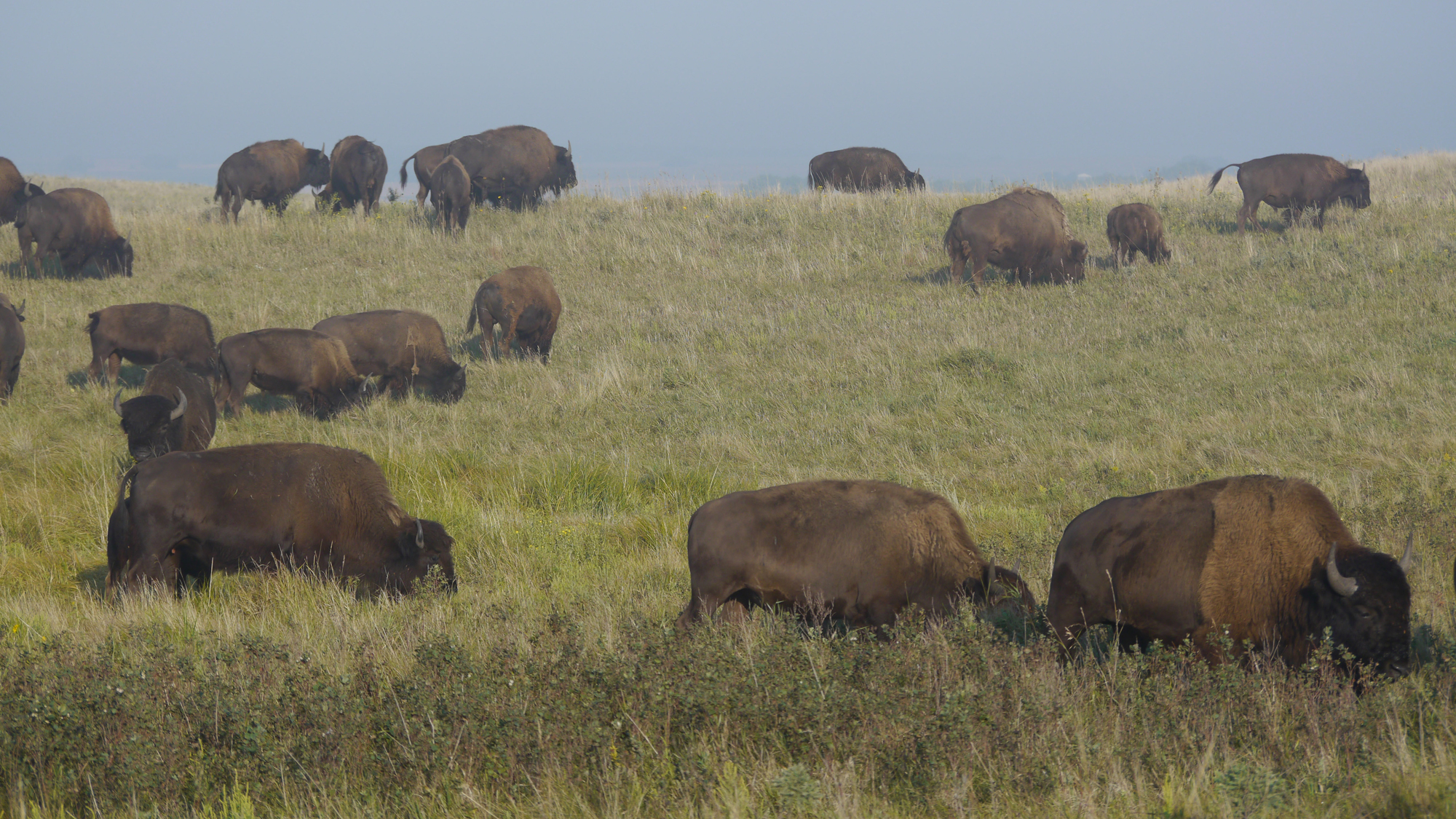
Traditionally, bison management has been all about the grass. Bison management has essentially been grass management.
“When thinking about herd health, managers have to promote plant diversity, not just grass,” says Craine. “If managers worked to promote grasses at the expense of nutritious forbs and shrubs, bison would suffer. Knowing what species bison rely on gives us the opportunity to promote and manage for those species that would help bison the most.”
For instance, Ceanothus – a nitrogen fixing shrub commonly known as Jersey tea – has never been considered important in bison management. Craine’s research, though, found this shrub to be an important source of protein for bison.
Of course, small preserves can complicate the picture. “We don’t know if bison eat certain plants because they’re nutritious or if they eat them because they’re there,” says the Conservancy’s Mary Miller.
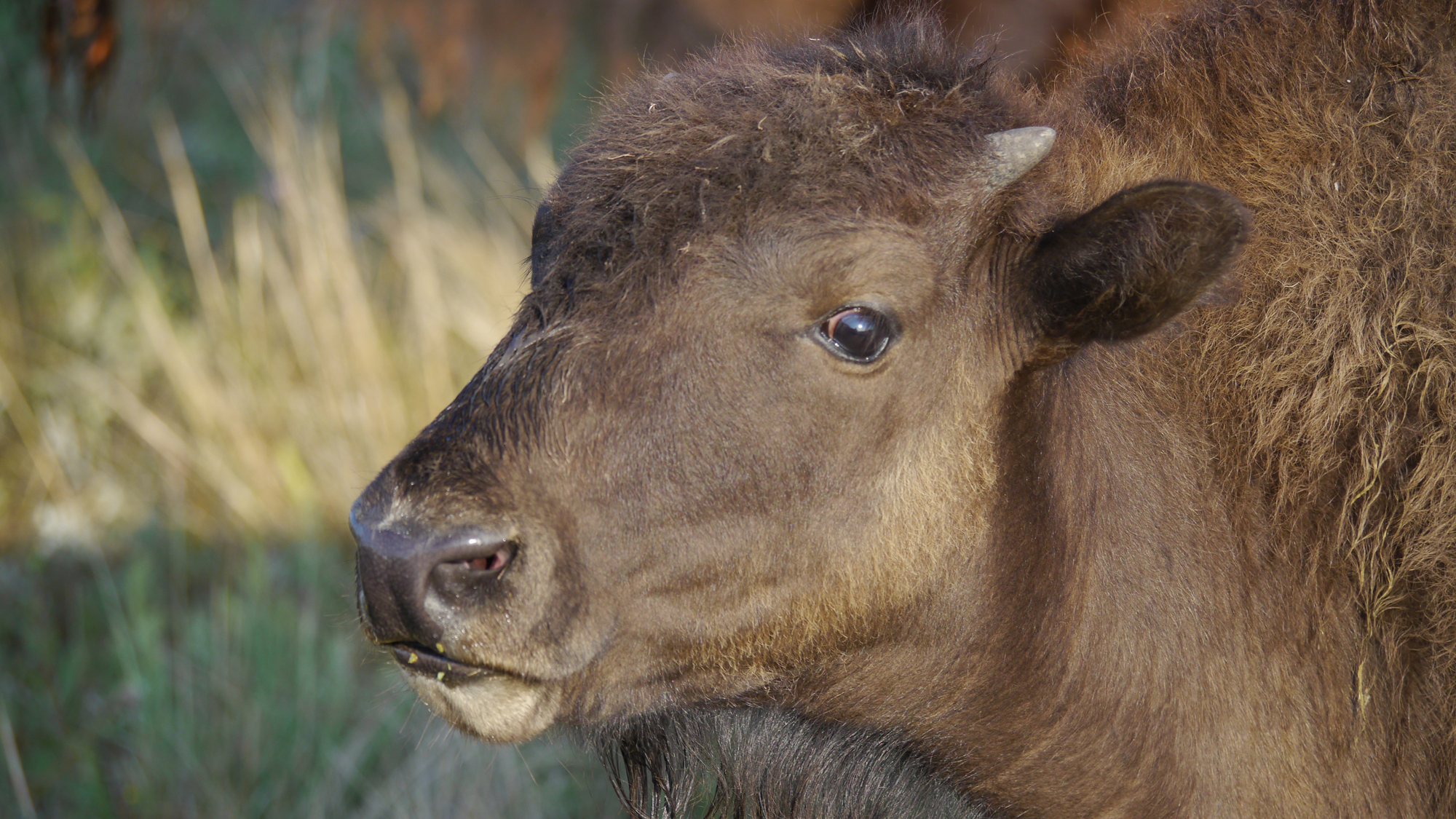
The DNA analysis will allow for a more accurate picture, and help bison conservationists adapt management strategies to a warming climate.
“We can’t make up for the fact that they can’t migrate to areas with more nutritious plants,” says Craine. “We know that as grasslands warm, the grasses become lower in protein. With these two facts, we could be looking at bison with lower growth rates and lower birth rates. But we could also compensate in our management, focusing on plant species that are higher in protein that bison will eat.
“Unfortunately, we are running out of time,” he continues. “we need to collect a lot more poop from a lot more bison if we are going to have a broad enough understanding of bison diet to stave off some of the effects of warming. We not only want to keep bison on the prairie, but also massive bison – the kind that make the earth shake when they run by.”
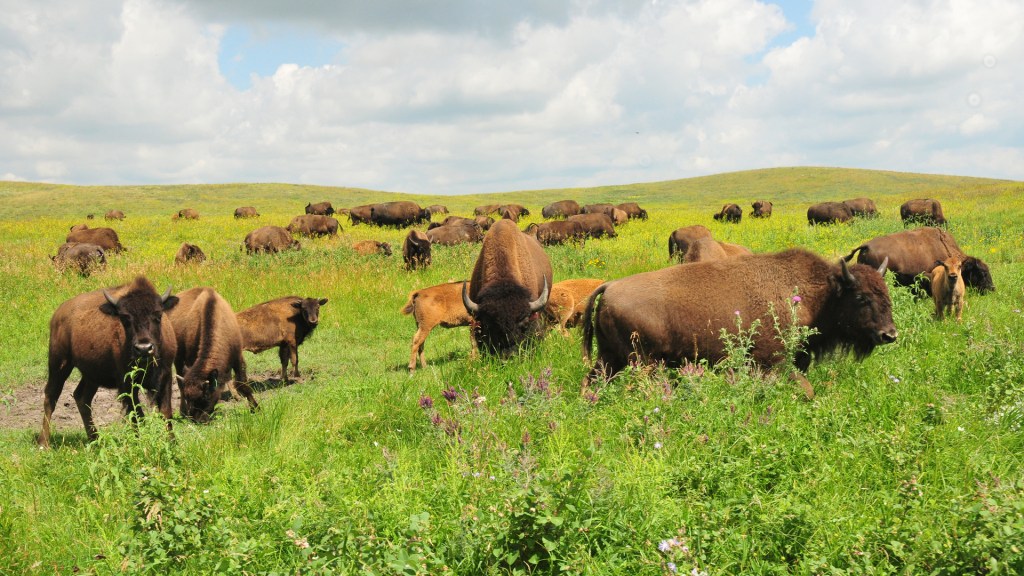



Love the article and love the Bison. Do you know if the there were brush and the like for Bison to browse back when the herds migrated or did they just migrate to follow the grasses?
Robbie
Almost all of the species we see now were on the Great Plains when the bison migrated. We do not know for sure, but most were there for the bison to eat before. From other work, we know that grass was more nutritious in the past. Rising atmospheric CO2 has pushed down protein concentrations in grasses over the past 100 years. They have also promoted woody species more than grasses. More than likely, bison in the past relied a lot more on grass than they do now.
To simply say I care is not the same as actually getting my hands dirty working out solutions.
500 pounds! That is a massive difference and making the SD bison less massive. Do they eat the thistle in the photo? I assume is it one of our many native thistles and not a weed. Good hunting to the pooper scoopers!
Tha Beautiful Bison are Necessary and they deserve to be here and run free… They have been around for hundreds of years… They are loving parents they have feelings and a heart and they are a soul just like we humans… Pls leave them alone to live in Peace n raise their families… Thank you
This just makes me question more as to why we are messing around in the heavens when we do not know athird of what is going on right here; and were a cause of most of the problems.
The Earth is changing wether we want it to or not, should we let the Bison adapt naturally or force them into a box, that should our efforts fail, they could never get out of?
This also has me wondering about the emerging awareness of climate change adaptation and wondering whether a desire to keep bison big is a wise use of scarce resources for a species that’s quite-possibly adapting to climate change even faster than we are. After all, if relict Pleistocene-era mega-fauna aren’t sustainable on a warming planet, is it good science or nostalgia that we try keeping them as big and brawny as in a romanticized western landscape painting hanging in the Smithsonian?
It’s a sad but true fact: more often than not, what’s desirable isn’t what’s sustainable.
This is a good question. I cannot speak for TNC, but often our climates are changing too fast for organisms to adapt. In the extreme case, we are often faced with the choice of extinction or intervention. It seems like we should choose intervention.
For bison, the types of changes we would have to make in managing them are relatively minor. But, first we need the knowledge, which is the slow part.
Warming climate is affecting all livings things. Many do not believe that this fact can be proved. Keep up the good work to save and improve the many ecological systems for all. Most animals are limited in what they can do to protect themselves. It is our responsibility to be change makers and educators.
Any news or comment on Ted Turner’s project to establish a contiguous corridor from Canada to Texas (I believe it was) to allow for bison migration?
Buffalo should be monitored in different areas. For instance, what do they eat on Catalina island? What do they ingest in Yellowstone or the Kiamichi area of Kansas, or is it Oklahoma?
It would seem that different forbs would be available on the Kaibab plateau or in the Palo Duro
Canyon of Texas. What about the Woods Buffalo of Manitoba? Men who are credited with
saving the Buffalo are Charles J. Jones of Garden City Kansas, Charles Goodnight of the JA
ranch and Walking Coyote. Who is responsible for the Buffalo on Catalina Island? Is it Zane Grey
who had a home there and was a friend of Charles Jones?
Wouldnt putting Bison on nature conserancy properties help out the Bison? Say like the flat ranch in island park idaho that the nature conservancy has cows on? Yellowstone Park is killing Bison left and right! Shouldnt we be finding more places for them to roam? The Bufalo feild campain is doing this shouldnt the nature consevancy do the same? Just a thought.
Yellowstone Park is not killing the Buffalo as Ms. Shults erroneously implies. The Buffalo are
prevented from mixing with domestic cattle because they sometimes carry brucellosis which
causes cows to abort instead of carrying to term. The Buffalo field campaign is a bunch of
hippies interfering with government efforts to get rid of excess Buffalo by shipping them to
native American peoples. Yellowstone Park is checking on brucellosis among Buffalo, but
it also carried by elk who don’t recognize Park boundaries.
No surprise things are far more complicated than believed, and therefore more difficult to try to correct or at least improve. The good news is that the bison are still with us by way of massive efforts to save them. They are as beautiful as ever, a significant thread connecting us to a past that is all too often ignored, misunderstood, or forgotten.
Whatever you can do to restore these majestic animals is most welcome. They have been decimated to near extinction and need to be restored. They are part of our American history and deserve a place for peace and quiet in our world.
Would burning the prairie thatch be of help in enriching the soil or is there no thatch left now that bison are restricted to one area.
That’s a great question. Throughout the Great Plains, periodic burning often promotes higher nutrient concentrations in grasses, which promotes the weight gain in grazers. Bison are often attracted to recently burned areas to feed on the nutritious new growth. Many Nature Conservancy properties have been instrumental in demonstrating this. Prescribed fire is something that can be applied more broadly to help bison.
Oops! If I’d read the journal first before posting…………………………………..
This is consistent with Whitetail deer and brood cows being larger than those in the south.
1 Soils are more eroded and leached by rainfall; hence less fertility
2 Plants in the South have higher moisture content and lower nutrition on both an as fed and dry matter basis thus requiring higher proportion of rumen/body weight which would tend limit mature size.
This is why I’m convinced climate change is a big deal for grazing animals and the plants in their diets. I expect the type of brood cow and its forage will have to change as warming proceeds, especially if more fertile lands are moved from grazing.